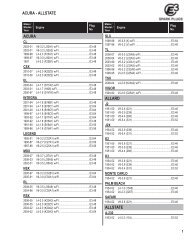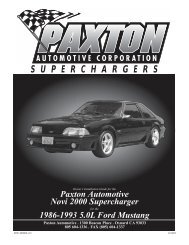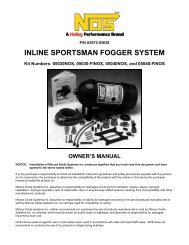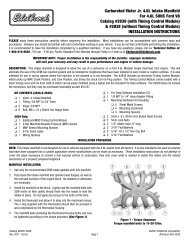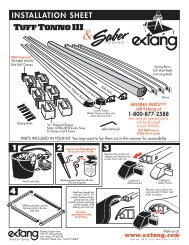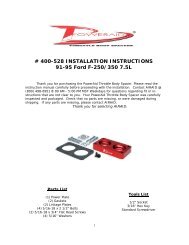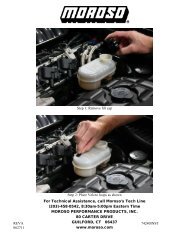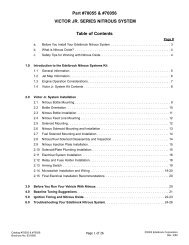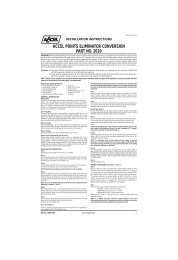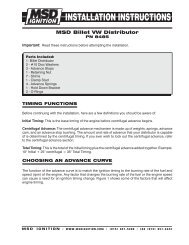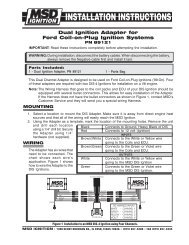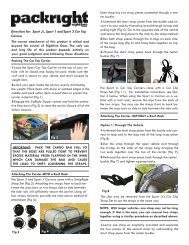Installation Instructions - Jegs
Installation Instructions - Jegs
Installation Instructions - Jegs
Create successful ePaper yourself
Turn your PDF publications into a flip-book with our unique Google optimized e-Paper software.
will be HyperPAC-based only.<br />
HyperPAC User Manual<br />
How a Drag Strip starting line works<br />
A drag strip starting line contains two photo-electric beams positioned slightly<br />
above the track’s surface and at some distance apart. (This is the distance that<br />
contains the tolerance discussed in Track Calibration procedure.) These beams are<br />
referred to as the "pre-stage" and "stage" beams. The set of lights that a driver watches<br />
to know when to start a race is commonly referred to as a "Christmas Tree.” The<br />
“Christmas Tree” contains lights to indicate when you have pre-staged and staged and<br />
has 5 additional lights; 3 yellow, 1 green, and 1 red. Each of the two lanes on the track<br />
has this set of lights.<br />
When your vehicle moves forward and the front tires interrupt the first beam, the<br />
pre-stage bulb on the track's "Christmas Tree” comes on , just to alert you that you are<br />
approaching the second beam, the "Stage" beam . As you continue to slowly roll<br />
slowly forward, the front tires will block the Stage beam and the Stage light will come<br />
on, signaling that the vehicle is staged. The distance traveled from the point when the<br />
stage light comes on until the vehicle’s front tires have cleared the stage beam is called<br />
"Roll Out". If you stop immediately at the point when the stage light just comes on, that<br />
is considered "shallow" staging . Shallow staging provides the most roll-out distance,<br />
which allows the vehicle to make a longer “running start” before starting the timing<br />
clocks, resulting in the quickest e.t.'s and fastest speeds.<br />
If you move past the point where the stage light comes on, you are "Deep" staging. If<br />
you clear the stage beam before the tree begins, the stage light will turn off, and you are<br />
no longer staged. One method of deep staging is to move forward slowly until the<br />
prestage yellow light goes out, and stage at that point. Deep staging is only used by<br />
bracket racers to reduce their reaction times, but for quickest and fastest runs, always<br />
shallow stage.<br />
In general, most cars leave around the time the last yellow comes on, without red<br />
lighting. A "perfect" start is when you leave at just the right moment to clear the stage<br />
beam just as the green comes on, and that results in a .000 second reaction time . A<br />
reaction time less than .000 seconds is considered a red light. If you are getting<br />
reaction times of .100 to .300 seconds, you are "late" on the tree.<br />
The best racers practice to try for reaction times between .010 to .030 seconds.<br />
Even good racers will sometimes red light, and will occasionally "be late." Since the<br />
HyperPAC provides reaction times, you can practice your starts on private property<br />
and in a safe place, to develop that skill.<br />
www.hypertech.com • (901) 382-8888 Page 48 of 66



